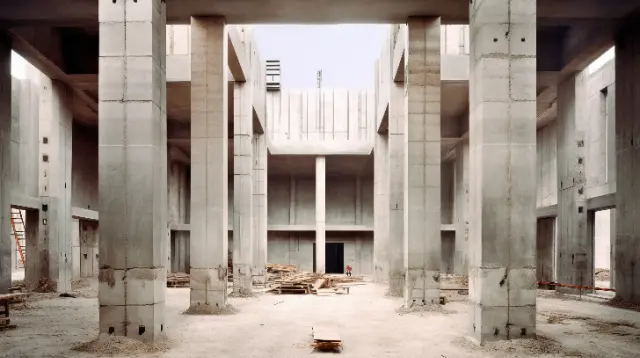Pile foundation Vs. Open Footing Foundation

Why is pile foundation preferred to an open footing foundation for a residential building even when hard rock strata is available at a depth of about 6 to 7 metres?
Answer:
A foundation is an important part of any structure as it transfers the load of the structure to the ground.
The choice between an open footing (also known as shallow) foundation and a pile (deep) foundation is primarily based on site conditions, the type and load of the structure, and cost considerations.
Here, I'll discuss each of these foundation types in detail:
1. Open Footing (Shallow) Foundation:
A shallow foundation, as the name suggests, is a type of foundation which transfers the load to the earth near the surface rather than to a subsurface layer.
Open footings are typically used where the load-bearing capacity of the surface soils is sufficient to support the imposed loads. Shallow foundations include spread footings (isolated footings), wall footings (strip footings), and mat (raft) footings.
Advantages:
- They are generally less expensive because they use less material, require less excavation and backfill, require less time to build, and do not typically require heavy equipment or high-level techniques.
- Shallow foundations are usually suitable when dealing with solid, hard rock sites.
2. Pile (Deep) Foundation:
A pile foundation is a type of deep foundation, used when the site has a weak shallow bearing strata, making it necessary to transfer load to a deeper, stronger strata at depth. Piles are long, slender, columnar elements that can be driven into the ground.
Advantages:
- Deep foundations can carry more load than shallow foundations.
- They can be used in both strong and weak soil conditions.
- They can reach depths to stable substrata not accessible by shallow foundations.
Coming to your question as to why a pile foundation might be preferred to an open footing foundation for a residential building even when hard rock strata is available at a depth of about 6 to 7 metres, here are a few reasons:
1. Ground Conditions: Even though hard rock strata is available at a depth of 6-7 meters, the soil layer above may be weak or have inconsistent soil properties. If the upper soil layer is expansive or prone to changes in volume with moisture content changes, or if the soil is loose and collapsible, it may still be more advantageous to use a pile foundation to bypass the problematic soil layer and reach the hard rock strata.
2. Load Requirements: The load of the structure could be such that the hard rock strata at a depth of 6-7 meters, although strong, might not be enough to carry the load of the structure if transferred through a shallow foundation. In such cases, a pile foundation would be a better choice.
3. Seismic Considerations: In earthquake-prone regions, deep foundations such as pile foundations can often provide better seismic resistance than shallow foundations.
4. Construction Considerations: Certain construction scenarios may require the use of pile foundations over shallow foundations due to factors like property lines, easements, or other site-specific challenges.
However, it's important to note that each case is unique and a geotechnical engineer should conduct a soil investigation and analysis to decide which type of foundation is most suitable for the specific circumstances.
It is not always the case that pile foundations are preferred when hard rock strata is available at a certain depth. This decision depends on many factors such as those mentioned above.
Replies
-
 mohsin8561its because of its ease of work. For open foundation a maximum area is to be excaveted for footing + tie beam etc. In that case the safety of besides of structure is an important factor
mohsin8561its because of its ease of work. For open foundation a maximum area is to be excaveted for footing + tie beam etc. In that case the safety of besides of structure is an important factor
but when pile prefere a shore pile or boundry pile is to be casted to retain the soil /earth/structure etc.
but in case of pile several group of pile is laid for one/alternate footings
its also depends on the SBC of soil &
when in case of hard rock strata is available in minimum depth with respect to road level then its difficult to break the rock for required depth of footing
so in that case pile foundation are prefered there are various types of pile foundation ex rotary types of pile.
hope its helpfull for you
You are reading an archived discussion.
